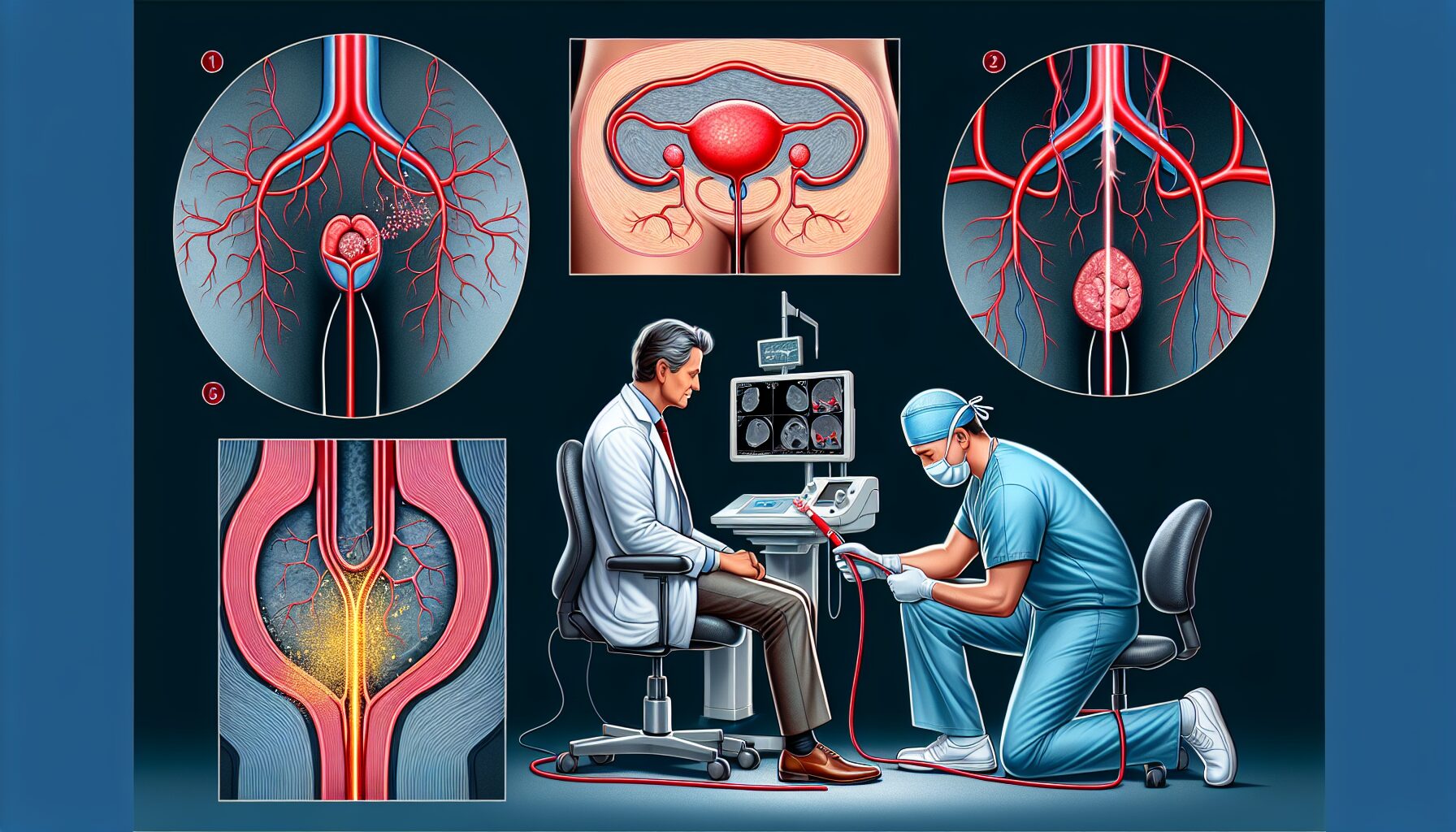Revolutionary Breakthrough: The Newest Treatment for Enlarged Prostate That Could Change Lives
Enlarged prostate, or benign prostatic hyperplasia (BPH), is a common condition affecting millions of men worldwide, particularly those over the age of 50. The discomfort and complications it brings, such as frequent urination, weak urine flow, and the inability to completely empty the bladder, can significantly impact the quality of life. Traditional treatments like medications and surgeries have been the mainstay options for years. However, a revolutionary new treatment is emerging that promises to change the landscape of BPH management forever.

Understanding BPH and Its Traditional Treatments
Before diving into the latest breakthrough, it’s essential to understand what BPH entails and how it has been traditionally treated. BPH occurs when the prostate gland enlarges, exerting pressure on the urethra and causing urinary problems. It’s not cancerous but can lead to severe complications if left untreated.
Traditional treatments include:
1. Medications: Alpha-blockers and 5-alpha-reductase inhibitors are commonly prescribed. While these drugs can be effective in reducing symptoms, they often come with side effects like dizziness, fatigue, and sexual dysfunction.
2. Minimally Invasive Therapies: Procedures like Transurethral Resection of the Prostate (TURP) and laser therapy aim to remove or shrink parts of the prostate. Though effective, these treatments can involve significant recovery time and potential complications.
3. Surgery: In severe cases, open or robotic-assisted surgery may be necessary to remove part of the prostate. This is usually considered a last resort due to its invasive nature and long recovery period.

The Newest Treatment: Prostate Artery Embolization (PAE)
The medical community is buzzing about Prostate Artery Embolization (PAE), a groundbreaking non-surgical procedure that offers a promising alternative for men suffering from BPH. PAE involves blocking the blood flow to specific areas of the prostate, causing it to shrink and relieve symptoms.
# How Does PAE Work?
PAE is performed by an interventional radiologist rather than a urologist or surgeon. Here’s a step-by-step overview of the procedure:
1. Preparation: The patient undergoes imaging tests like MRI or CT scans to map out the blood vessels supplying the prostate.
2. Accessing the Arteries: A small incision is made in the groin area to insert a catheter into the femoral artery.
3. Embolization: Using advanced imaging technology, tiny particles are injected through the catheter into the arteries that feed the prostate. These particles block blood flow, leading to a reduction in prostate size over time.
4. Recovery: The entire procedure takes about 1-2 hours, and patients can typically go home the same day with minimal downtime.
Benefits of PAE Over Traditional Treatments
PAE offers several advantages over traditional BPH treatments:
1. Minimally Invasive: Unlike TURP or surgical options, PAE does not involve cutting or removing tissue, which means less pain and quicker recovery times.
2. Fewer Side Effects: Because PAE targets only specific blood vessels, there’s a lower risk of side effects like sexual dysfunction or urinary incontinence.
3. Outpatient Procedure: Most patients can return home on the same day as their procedure, making it far more convenient than hospital-based surgeries.
4. Effectiveness: Studies have shown that PAE can significantly reduce symptoms and improve quality of life for men with BPH.
Clinical Evidence Supporting PAE
Numerous clinical trials and studies have demonstrated the effectiveness of PAE in treating BPH. A notable study published in *The Journal of Vascular and Interventional Radiology* found that over 80% of patients experienced substantial symptom relief within six months post-procedure. Furthermore, long-term follow-ups indicate that these benefits are sustained over several years.
Real-Life Success Stories
The real-world impact of PAE can be best understood through patient testimonials. John S., a 62-year-old retiree from California, shared his experience: “I was waking up five times a night to use the bathroom and was constantly tired during the day. Medications didn’t help much, and I was hesitant about surgery. PAE changed my life—I’m now sleeping through the night and feel like I have my life back.”
Another patient, Mark T., echoed similar sentiments: “The recovery was so quick; I was back at work in two days! It’s amazing how such a simple procedure can make such a big difference.”
Is PAE Right for You?
While PAE is an exciting advancement in BPH treatment, it’s essential to consult with a healthcare provider to determine if it’s suitable for your specific condition. Factors such as overall health, prostate size, and severity of symptoms will influence whether PAE is recommended.
The Future of BPH Treatment
As research continues and technology advances, treatments like PAE represent a significant step forward in managing conditions like BPH more effectively and with fewer side effects. The hope is that more men will have access to this innovative procedure as awareness grows within both medical communities and patient populations.
In conclusion, Prostate Artery Embolization stands out as a promising new treatment for enlarged prostate that combines effectiveness with minimal invasiveness. For millions of men struggling with BPH symptoms daily, this revolutionary procedure offers hope for a better quality of life without the drawbacks associated with traditional treatments.
If you or someone you know suffers from BPH, it might be time to explore this cutting-edge option and discuss it with your healthcare provider. The future of BPH treatment is here—and it’s brighter than ever before.
